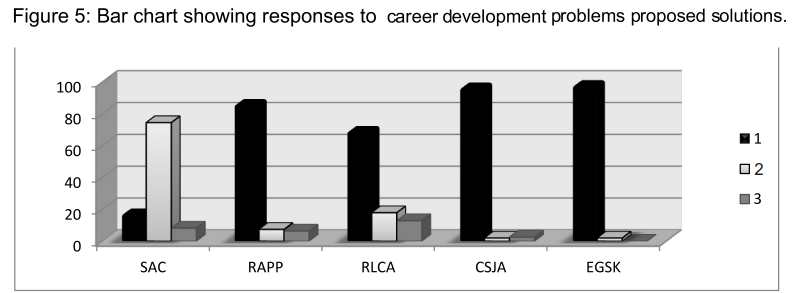An assessment of the level of motivation towards the study of Anatomy among students in south-western Nigerian universities
Keywords:
Anatomy, Motivation, Students, Universities, NigeriaAbstract
Background: Motivation has always been a key factor in career development and so can be derived by professionals from many sources or a collection of factors. Anatomy is offered as a course of study leading to the award of a bachelor's degree in several Nigerian universities. There has been observable concern about the level of motivation among students studying Anatomy.
Objective: The objective of this study was to assess the level of motivation among students studying anatomy in Nigeria; the causative factors and how these would influence their career.
Methodology: Random sampling technique was used to recruit 254 participants across the universities that offer bachelor's degree programme in Anatomy in South-western Nigeria. Students were distributed across levels of study as follows: 18.2% in 100 level, 9.5% in 200 level, 32% 300 level, 18.6% in 400 level and 21.7% 500 level. Structured questionnaire was used to obtain desired information. Suitable statistical methods were employed to collate data; results were presented as percentages for analyses, comparisons and inferences.
Major findings: The students' levels of motivation towards their career were being affected negatively majorly by their initial lack of interest in Anatomy as a course of study; lack of clear cut policies about the professional roles in the health and other relevant sectors as well as poor career recognition. Students' attitude towards study was fairly positive.
Conclusion: Anatomy students' motivation is being limited by identified factors and urgent steps should be taken to address them to increase the level of motivation among the students.
References
Van Calster K, Lens W, Nuttin JR. Affective Attitude toward the Personal Future: Impact on Motivation in High School Boys. Am. J Psychology 1987; 100: (1) 1-13.
Moore KL, Dalley AF. Clinically Oriented Anatomy. 5th Edition, Philadelphia: Lippincott Williams & Wilkins, 2006.
Persaud TVN. Early History of Human Anatomy from Antiquity to the beginning of the Modern Era. Thomas: Springfield, IL, 1984.
Owolabi JO. Introducing Anatomy, Ilorin: Ace-World, 2011.
Lamm H, Schmidt RW, Trommsdorff G. Sex and social class as determinants of future orientation (time perspective) in adolescents. J Personality and Social Psychology 1976; 34:317-326.
Lens W. Sex differences in attitude towards personal past, present and future. Psychologica Belgica 1975; 15:29-33.
Rattray J, Jones MC. Essential elements of questionnaire design and development, J. Clinical Nursing 2007; 16:234–243.
Sitzia J, Dikken C, Hughes J. Psychometric evaluation of a questionnaire to document side-effects of chemotherapy. J Adv. Nursing, 1997; 25:999–1007.
Rattray JE, Johnston M, Wildsmith JAW. The intensive care experience: development of the intensive care experience (ICE) questionnaire. J Adv. Nursing 2004; 47: 64–73.
Bowling A. Research Methods in Health. Open University Press, Buckingham, 1997.
World Medical Association. The Declaration of Helsinki, 1964; Amended in 2008, World Medical Association, Inc., Accessed 9th September 2013. http://www.wma.net
Owolabi JO, Ghazal OK, Oyewopo OO,
Adeniyi PAO. Biomedical Research Methodology. International Edition, Ibadan: Extension, 2012.
Faseeh S, Hamid H, Arslan I, Aymen S.
Attitudes of medical students towards their career - perspective from KhyberPukhtunkhwa. J Pakistan Med. Ass. 2013; 63: 1017.
Peter AI, Azu OO, Ekandem G, Etuknwa BT, Bassey RB. A Survey of Attitude of Lecturers and Students of Anatomy towards making Anatomy Career Friendly in
Nigeria. Ibom Med. J, 2012; 5: 39-44.

Downloads
Published
How to Cite
Issue
Section
License
Copyright (c) 2023 Research Journal of Health Sciences

This work is licensed under a Creative Commons Attribution-NonCommercial-NoDerivatives 4.0 International License.
Research Journal of Health Sciences journal is a peer reviewed, Open Access journal. The Journal subscribed to terms and conditions of Open Access publication. Articles are distributed under the terms of Creative Commons License (CC BY-NC-ND 4.0). (http://creativecommons.org/licences/by-nc-nd/4.0). All articles are made freely accessible for everyone to read, download, copy and distribute as long as appropriate credit is given and the new creations are licensed under the identical terms.

